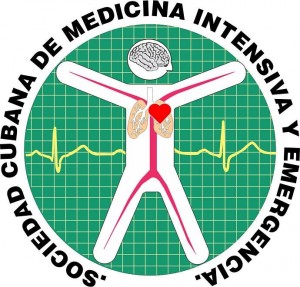Falso negativo con el uso del doppler transcraneal en el diagnóstico de la muerte encefálica / Negative false with the transcranial Doppler use in the brain death diagnosis
Palabras clave:
Doppler transcraneal, Falso negativo, Muerte encefálica, Diagnóstico / Transcranial doppler, Negative false, Brain death, DiagnosisResumen
Introducción: el doppler transcraneal (DTC) es utilizado frecuentemente en el diagnóstico de la muerte encefálica (ME). El uso de esta técnica presenta algunas limitaciones, encontrándose en ocasiones casos falsos negativos.
Métodos: se estudia paciente con trauma cráneo-encefálico (TCE) severo y hematoma subdural temporo-parietal por pérdida brusca de conciencia en el curso de una hemorragia intraparenquimatosa putaminal. Se realiza intervención quirúrgica, con craneotomía realizada en hemisferio izquierdo, a pesar de lo cual presenta una mala evolución. Es diagnosticado en ME realizándose dos evaluaciones clínicas positivas para la misma, con intervalo de 6 horas de separación. Luego de concluida cada evaluación se realizó DTC, explorando las arterias cerebrales del polígono de Willis; con un tercer DTC realizado 6 horas después de la segunda evaluación clínica.
Resultados: el DTC mostró patrones de parada circulatoria cerebral en la arteria cerebral media (ACM) derecha y en la arteria basilar mantenidos en el tiempo; mientras que en la ACM izquierda correspondiente al lado de la craneotomía, persistían las velocidades de flujo sanguíneo cerebral, situación que se mantuvo con el decursar del tiempo.
Conclusiones: paciente con diagnóstico clínico de ME, con DTC que mostró persistencia de velocidades de flujo sanguíneo en la ACM del hemisferio de la craneotomía realizada, a pesar de presentar parada circulatoria cerebral por DTC por más de 18 horas, en la ACM derecha y arteria basilar. Demostrándose la limitación del DTC en el diagnóstico de la ME en las grandes craneotomías.
Abstract
Introduction: The transcranial doppler (TCD) is frequently used in the diagnosis of brain death. This technique has limitations, findings in many situations false negative cases.
Methods: we studied a patient with several brain trauma, and temporo-parietal subdural hematoma by acute loss of conscience in the course of a putaminal intraparenquimatose hemorrhage. A craniotomy surgery intervention in cerebral left hemisphere was realized immediately, but the patient begins with a bad evolution and was diagnosed in brain death. We realized two positive clinical evaluations with an interval of six hours between them, after that it was realized a transcranial doppler used for the exploration of the cerebral arteries of Willis circle; with a third TCD realized 6 hrs later of the second clinical evaluation.
Results: TCD showed the existence of cerebral circulatory arrest in cerebral middle artery (CMA) right and basilar artery persistent in the time, while in CMA left, in the craniotomy hemisphere side, showed a persistent velocity flow pattern in full time.
Conclusions: patient with brain death clinical diagnosis, the TCD showed a persistent velocity flow pattern in full time in CMA left, in hemisphere side with craniotomy, and existence of cerebral circulatory arrest in cerebral middle artery right and basilar artery, persistent for more than 18 hrs later. This study showed the TCD limitations in patients with diagnosis of brain death and craniotomy surgery.
Descargas
Citas
1. Planas Oñate A, González Rivera AE, Sánchez Miranda JM, Machado Curbelo C. Doppler transcraneal en el diagnóstico de la muerte encefálica. Rev Cub Med Int Emerg Vol. 15, 2016;(3): 37-54.
2. Petty GW, Mohr JP, Pedley TA, Tatemichi TK, Lennihan L, Duterte DI, et al. The role of transcranial Doppler in confirming brain death: Sensitivity, specificity, and suggestions for performance and interpretation. Neurology. 1990;40: 300-3.
3. Cabrer C, Domínguez-Roldán JM, Manyalich M, Trias E, Paredes D, Navarro A, et al. Persistence of intracranial diastolic flow in transcranial Doppler sonography exploration of patients in brain death. Transplant Proc. 2003; 35: 1642-3.
4. De Freitas GR, André C, Bezerra M, Nunes R, Vincent GM. Persistence of isolated flow in the internal carotid artery in brain death. J Neurol Sci. 2003; 210: 31-4.
5. Powers AD, Graeber MC, Smith RR. Transcranial Doppler Ultrasonography in the determination of brain death. Neurosurgery. 1989; 24: 884-9.
6. Fages E, Temb JI, Fortea G, Lopez P, Lago A, Vicente JL et al. Utilidad clínica del Doppler transcraneal en el diagnóstico de la muerte encefálica. RevMedclinic (Barc). 2004; 122(11): 407-12.
7. Hadani M, Bruk B, Ram Z, Knoller N, Spiegelmann R, Segal E. Application of transcranial Doppler ultrasonography for the diagnosis of Brain death. IntensiveCareMed. 1999; 25:822-8.
8. Conti A, Iacopino D, Spada A, Cardalli SM, Giusa M, La Torre D et al. Transcranial Doppler Ultrasonography in the Assessment of Cerebral Circulation Arrest: Improving Sensitivity by Transcervical and Transorbital Carotid Insonation and Serial Examinations. Neurocrit Care. 2009; 10: 326-335.
9. Escudero D, otero J, Quindós B, Villa L. Doppler Transcraneal en el diagnóstico de la Muerte Encefálica. Es útil o retrasa el diagnóstico? Rev Medicina Intensiva. 2015; 39: 244-50.
10. Calleja S, Tembl I.J, Segura T, en representación de la Sociedad Española de Neurosonología (SONES). Recomendaciones del uso del Doppler Transcraneal para determinar la existencia de parada circulatoria cerebral como apoyo al diagnóstico de la muerte encefálica. Rev Neurol 2007; 22(7): 441-7.
11. Monteiro LM, Bollen CW, van Huffelen AC, Jansen NJ, van Vught AJ. Transcranial Doppler ultrasonography to confirm brain death: a meta-analysis. Intensive Care Med 2006; 32: 1937-44.
12. De Freitas GR, Andre C. Sensitivity of transcranial Doppler for confirming brain death: a prospective study of 270 cases. Acta Neurol Scand 2006; 113: 426-32.
13. Escudero D. Diagnóstico de muerte encefálica. Rev Medicina Intensiva 2009; 33(4): 185-95.







